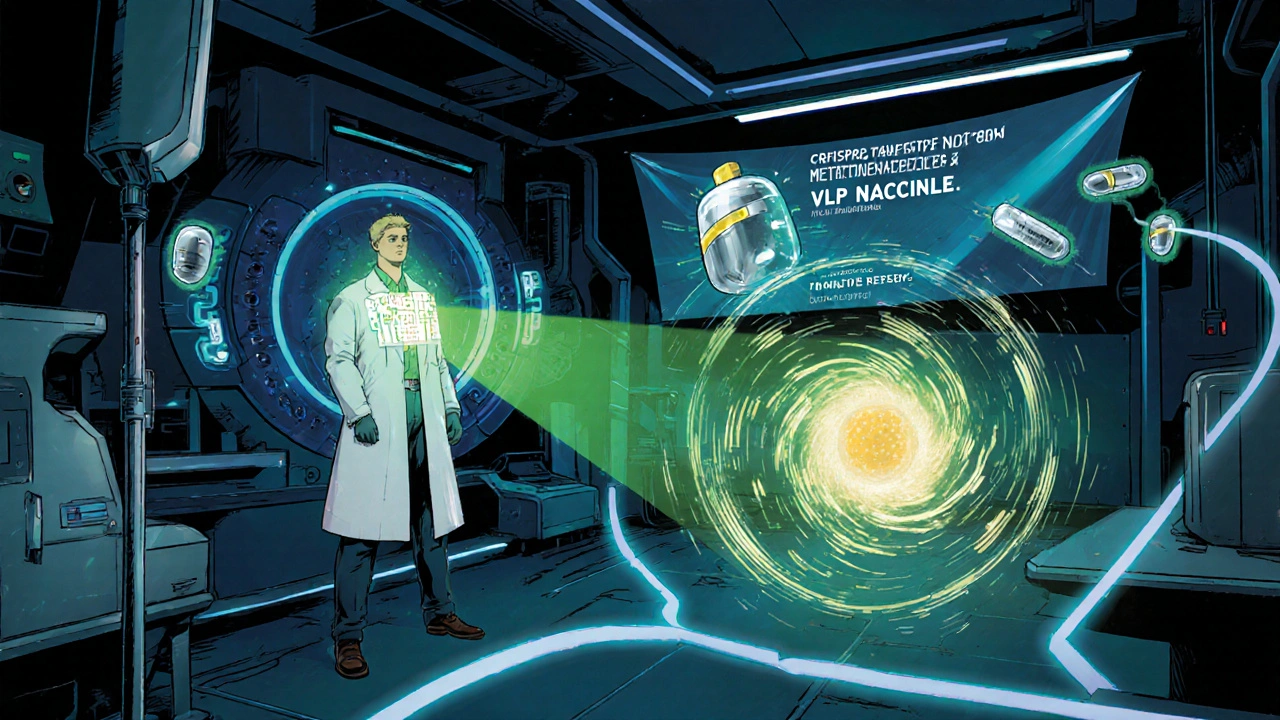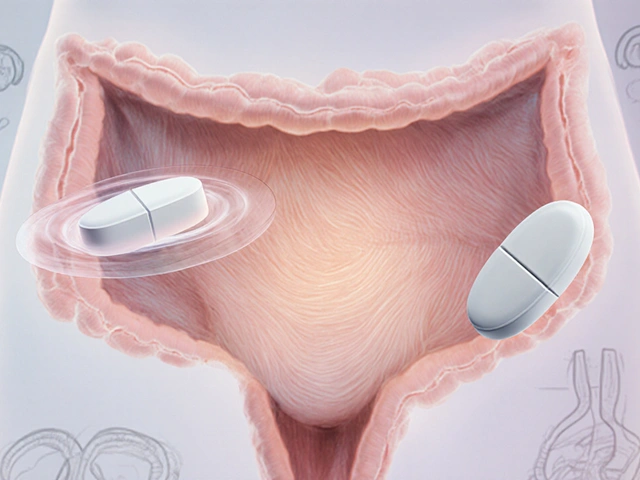Trichomoniasis Treatment Success Calculator
Estimate the effectiveness of different treatment options based on your specific situation. Data from 2023-2025 research.
Recommended Treatment
Important Note: This calculator uses current research data. Always consult with a healthcare provider for treatment decisions.
Trichomoniasis is a common sexually transmitted infection caused by the protozoan Trichomonas vaginalis. Recent advances in trichomoniasis research have reshaped how clinicians diagnose, treat, and prevent the disease. Below you’ll find the most up‑to‑date findings, practical takeaways, and a quick checklist you can use tonight.
Why the New Data Matters
Older guidelines relied heavily on symptom‑based treatment and microscopy, which missed up to 50% of infections. Modern studies, published in 2023‑2025, show that PCR testing and point‑of‑care antigen kits catch the hidden cases, cutting transmission rates dramatically.
How Doctors Diagnose Trichomoniasis Today
- Microscopy - still useful in low‑resource settings but limited sensitivity.
- Culture - gold‑standard for research, rarely used clinically.
- Rapid antigen tests - pocket‑size devices that give results in 15minutes. Sensitivity now sits at 92%.
- PCR testing - detects parasite DNA with >98% accuracy. Costs have dropped to $15 per test in many regions.
Guidelines from the World Health Organization (WHO) now recommend PCR as the primary confirmatory method in high‑prevalence areas.
Current First‑Line Treatments
For decades, Metronidazole has been the go‑to drug. However, new data reveals rising resistance, especially in sub‑Saharan Africa. Here’s a side‑by‑side look at the three most prescribed regimens.
| Drug | Dosage | Success Rate | Key Side Effects |
|---|---|---|---|
| Metronidazole | 2g single dose OR 500mg twice daily for 7days | 85‑90% | Nausea, metallic taste, rare neurotoxicity |
| Tinidazole | 2g single dose | 92‑95% | Less nausea, occasional headache |
| Nitazoxanide‑based combo | 500mg twice daily for 5days + probiotic | 96‑98% (clinical trial 2024) | Minimal; mild abdominal cramping |
Notice the jump in cure rates with the nitazoxanide combo. The 2024 multicenter trial in South Africa, Brazil, and Vietnam reported a 97% eradication rate, even among patients who previously failed metronidazole.

Emerging Therapies & Prevention Strategies
Beyond pills, researchers are exploring:
- Nanoparticle drug delivery - encapsulating metronidazole in lipid nanoparticles improves tissue penetration and lowers required dose.
- CRISPR‑based diagnostics - a rapid, point‑of‑care test that spots Trichomonas vaginalis DNA in under 10minutes with 99% specificity.
- Probiotic adjuncts - Lactobacillus crispatus strains help restore vaginal microbiome balance after treatment, reducing recurrence by 30% in a 2023 cohort.
Impact on Women's Health and Pregnancy
Untreated trichomoniasis raises the odds of preterm birth by 1.8‑fold and can transmit to newborns, causing respiratory issues. A 2025 WHO meta‑analysis links the infection to a 30% increase in HIV acquisition risk, underscoring the need for routine screening in high‑risk populations.

Quick Checklist for Patients and Providers
- Screen sexually active adults at least annually - especially if pregnant or HIV‑positive.
- Use PCR testing or rapid antigen kits for accurate diagnosis.
- First‑line therapy: consider tinidazole or the new nitazoxanide combo if local resistance data show >10% metronidazole failure.
- Advise abstinence or condom use for 7days after treatment completion.
- Offer probiotic supplementation to lower recurrence risk.
- Retest 3weeks post‑treatment to confirm cure.
Following these steps can halve community transmission in just one year, according to modeling studies from the CDC.
Future Directions
Researchers are now focusing on vaccine development. Early‑phase trials of a recombinant VLP (virus‑like particle) vaccine showed promising antibody responses in mice, and a first‑in‑human safety study is slated for 2026. If successful, a vaccine could become the first preventive tool against a protozoan STD.
Frequently Asked Questions
Can trichomoniasis be cured without medication?
No. While the infection can clear spontaneously in a minority of cases, the overwhelming majority require antimicrobial therapy to prevent complications and spread.
Is it safe to get pregnant after treatment?
Yes. Both metronidazole and tinidazole are classified as pregnancy‑category B. Treatment should be finished at least 48hours before conception attempts.
How long after treatment can I have sex again?
Abstinence or condom use for 7days reduces re‑infection risk. Partners should be treated simultaneously.
Does a negative microscopy test guarantee I’m infection‑free?
Not necessarily. Microscopy misses up to half of infections, especially low‑load cases. Follow‑up PCR confirms eradication.
Are there any natural remedies that work?
Herbal products have no proven efficacy in controlled trials. Probiotics can aid recovery after antibiotics, but they are not a standalone cure.





Emily (Emma) Majerus
October 16, 2025 AT 18:41Great summary! Definately helpful for anyone dealing with trich.
Miriam Rahel
October 17, 2025 AT 08:34While the article admirably captures recent advances, it omits a critical appraisal of the cost‑effectiveness of PCR versus point‑of‑care antigen tests. In high‑income settings, the marginal benefit of a $15 assay may not justify widespread implementation, particularly when sensitivity gains are modest. Moreover, the cited cure rates for nitazoxanide‑based regimens lack stratification by HIV status, an omission that undermines the generalizability of the findings. A more rigorous synthesis would also address the methodological heterogeneity across the referenced trials.
Frank Diaz
October 17, 2025 AT 22:28We stand at the crossroads of microscopic ignorance and molecular enlightenment, yet many cling to antiquated practices as if they were immutable truths. The relentless march of PCR technology begs the question: why do we linger in the shadows of our own complacency? Acceptance of superior diagnostics demands not only fiscal commitment but also an intellectual humility that many clinicians have yet to cultivate. Let us not mistake the comfort of the familiar for wisdom.
Mary Davies
October 18, 2025 AT 12:21The narrative unfurls like a slow‑burn drama, each new therapy a protagonist stepping onto a stage of hope and uncertainty. It is as if the battle against unseen parasites has become a theatrical spectacle, where the audience-patients-await their curtain call of cure. Yet the script remains unwritten for many, especially those in resource‑scarce locales, leaving them perpetually in the wings.
Valerie Vanderghote
October 19, 2025 AT 02:14Okay, so let me just unpack this whole thing because I feel like nobody really gets how chaotic the situation is, especially when you stare at those numbers and pretend they’re just abstract stats. First off, the cost of a PCR test dropping to fifteen bucks sounds like a miracle, but that’s only the tip of the iceberg, because you still need the equipment, trained staff, and a reliable supply chain, which most clinics in low‑income areas simply don’t have. Then there’s the whole resistance issue with metronidazole – the article mentions rising resistance but doesn’t tell you how widespread it actually is or which populations are hit the hardest, and that omission feels almost negligent. The nitazoxanide combo looks promising on paper, but the clinical trials were done in very specific settings – South Africa, Brazil, Vietnam – and we can’t just assume the same success rates will translate to, say, rural Appalachia or the Pacific Islands. Also, let’s talk about the probiotic adjuncts; sure, restoring the microbiome is a nice idea, but the evidence is still in its infancy and you’ll find a lot of conflicting data out there. And while we’re on the topic of probiotics, the article breezes past the fact that not all Lactobacillus strains are created equal – some actually might not survive the acidic environment at all. The emerging nanotech delivery systems sound like something out of a sci‑fi movie, yet the safety profile for long‑term use is still largely uncharted territory. CRISPR‑based diagnostics are a game‑changer, no doubt, but the regulatory hurdles and cost of scaling up are massive, and the piece barely scratches that surface. I also can’t help but notice the glaring lack of discussion about sexual health education, which is arguably the most effective prevention tool we have, especially in high‑risk communities. The checklist is useful, but it reads like a to‑do list that health workers can’t realistically follow without additional resources and systemic support. Moreover, the modeling studies from the CDC that claim we could halve transmission in a year are based on optimistic assumptions about adherence and partner treatment coverage. Let’s be real – human behavior doesn’t always align with theoretical models. In sum, while the article is packed with exciting data, it also glosses over the gritty realities of implementation, funding, and cultural barriers that will ultimately determine whether these advances make a tangible difference on the ground. Finally, we need robust post‑treatment surveillance to catch reinfections early, something the article completely overlooks. Until those gaps are filled, the promise remains just that – promise.
Michael Dalrymple
October 19, 2025 AT 16:08It is commendable that the field is moving toward more precise diagnostics; such progress not only improves individual outcomes but also contributes to public health stewardship. Clinicians should feel empowered to incorporate PCR testing where feasible, while remaining cognizant of local resistance patterns. In parallel, embracing adjunctive probiotic therapy may enhance cure durability, aligning therapeutic efficacy with holistic patient care.
Virginia Dominguez Gonzales
October 20, 2025 AT 06:01The shift to rapid, high‑sensitivity testing feels like turning on a spotlight in a dark theater – suddenly the hidden actors are revealed, and we can finally give them their due bow. Embracing these tools will undoubtedly lift the curtain on countless silent infections.
Samantha Oldrid
October 20, 2025 AT 19:54Oh great, another breakthrough to ignore until it costs an arm and a leg.
Kate Marr
October 21, 2025 AT 09:48Our labs should prioritize home‑grown solutions, not rely on foreign kits 🇺🇸👍. Supporting domestic biotech ensures security and jobs.
James Falcone
October 21, 2025 AT 23:41You know what? We’ve got the tech, we just need the will to use it. No more waiting on anyone else.
Darryl Gates
October 22, 2025 AT 13:34The data on nitazoxanide are impressive; however, clinicians must verify local susceptibility before switching regimens. Maintaining a balanced approach will serve patients best.
Carissa Padilha
October 23, 2025 AT 03:28There’s a hidden agenda behind the push for PCR testing. Big Pharma stands to profit from increased test sales, while the real culprits – lifestyle and education gaps – remain unaddressed. It feels like a classic diversion, steering resources away from community‑based interventions that actually work.
Richard O'Callaghan
October 23, 2025 AT 17:21Look, i dont think u realy get how hard it is to get a pcr kit in a small town. The supply chain is a mess and the staff cant even figure out the new software. It just adds more stress to already overworked clinics.
Alexis Howard
October 24, 2025 AT 07:14Sure, new tests are hype not needed
Malia Rivera
October 24, 2025 AT 21:08The pursuit of a vaccine is noble, yet we must first secure our borders against imported infections. If we pour resources into a speculative immunization while ignoring proven containment strategies, we betray our own people. Let’s prioritize domestic research that delivers tangible results now.
lisa howard
October 25, 2025 AT 11:01Honestly, the whole conversation feels like a soap opera where every new study is a plot twist that leaves us hanging on a cliff‑hanger. One moment we’re celebrating tinidazole’s convenience, the next we’re told metronidazole is being disguised in nanoparticle coats. The drama never ends, and the audience – the patients – are left to wonder who the real hero is.
Cindy Thomas
October 26, 2025 AT 00:54While the enthusiasm for CRISPR diagnostics is justified, the technology still faces scalability challenges :). Until we have cost‑effective production, we risk creating another equity gap.
Crystal Heim
October 26, 2025 AT 13:48Data ignored resistance patterns leads to repeated failures